Zajímavý čtení dík! 
How to bring a Roman emperor to life? Thanks to AI, it's possible
Categories: Personalities , Finds and rescue research abroad
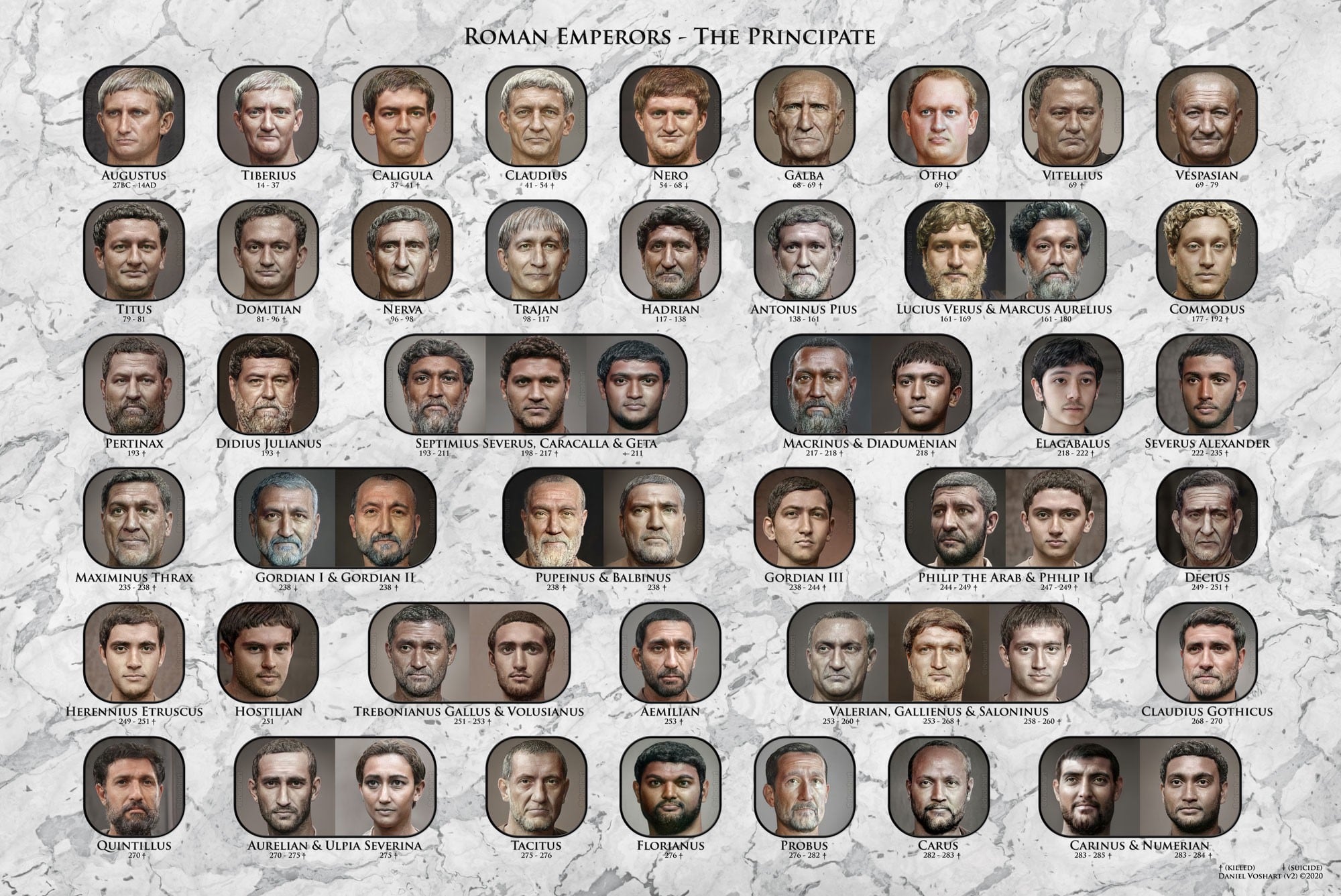
Artificial intelligence is a fantastic tool for renovating old photos and videos. So much so that it can, in a sense, "revive" ancient statues and stone busts of the long-dead.emperors, as designer Daniel Voshart recently demonstrated in his "quarantine project"...
The artist, who makes his living mainly by working with virtual reality in the film industry, had nothing to do during his covid break, so he used the time off to pursue his favourite hobby: "reviving" old sculptures. He found Roman emperors to be suitable material; partly because they were often the great modernEuropean world, and moreover their likenesses can be partly read from contemporary statues, busts, paintings or old coins.
Although he completed his initial depiction of the 54 emperors who ruled between 27 BC and 285 AD in July, he had to update his portraits in the second half of August. He had originally produced 300 posters in the hope that they would sell in a year. Instead, they were all gone in just three weeks, and word of his work has since spread around the world. "I knew Roman history was popular and would have an audience. But it was still a bit surprising how it took off and how popular the paintings became," the artist explained.
To produce the realistic portraits, Voshart combines different programs and sources. The main tool is an online application called ArtBreeder, which uses artificial intelligence in the form of a so-called "Generative Competitive Network" (GAN) to manipulate portraits and landscapes. This is a technology where two neural networks "compete" with each other to solve a predefined problem. In this case, calculating the probability of a face's appearance from embedded photos.
Voshart uploaded portraits of emperors to ArtBreeder, for which he collected data from more than 800 busts, coins and paintings, primarily selecting depictions that were created during the rulers' lifetimes. He then edited the portraits by hand based on historical descriptions and sent them back to GAN. "I worked in Photoshop, uploaded it to ArtBreeder, which tweaked it, then transferred it back to Photoshop, etc. This ultimately resulted in the best photorealistic quality," says the artist whose goal was to create portraits that would look convincing on their own: "What I do is an artistic interpretation of an artistic interpretation," he added,
To make everything work as well as possible, he sometimes uploaded pictures of celebrities to GAN. For example, there's a glimpse of Daniel Craig in his Augustus, while he was inspired by an image of wrestler André "The Giant" Andre when creating his portrait of Maximinus Thrax. This was due to the assumption that Thrax had a pituitary gland dysfunction in his youth, similar to André (whose own name was André René Roussimoff). Voshart "borrowed" the wrestler's features to emphasize Thrax's jaw and eyebrows. The process, he says, is almost an alchemical experiment; relying on a careful combination of inputs to create the perfect result.
Somewhat surprisingly, Voshart claims to have had no particular interest in Roman history before embarking on this project. However, the insight into the lives of the emperors while creating his portraits changed the artist's mind. He would like to visit Roman galleries and museums to gain a deeper understanding of the period. In addition, his work interests academics, who applaud the fact that he has given a new depth and realistic look to the emperors.
The artist has been in contact with a group of history professors and experts for a long time, who have provided him with a lot of interesting information during his work. For example. the choice of skin colour is one of the areas where there is much disagreement even among experts, especially with thelike Septimius Severus, who is thought to have had Phoenician or possibly Berber ancestry.
Severus is the only Roman emperor whose likeness is preserved in a painting on the Severan Tondo, a painting that probably originated in Egypt around 200 AD. The wooden panel depicts Septimius Severus, his wife Iulia Domna and his sons Caracalla and Geta in melted coloured wax. "It depends on who you ask, but I see in the painting a North African man with dark skin," Voshart says. "I'm very much changing my own preconceptions about the faces I've known or encountered."
As a thank-you to his advisors, Voshart used a USC professor's image of a man who closely resembles Emperor Numerian to create his portrait of the ancient ruler. Perhaps this image will be the one that sparks various debates among future generations of scholars about the origins and realism of the emperor's portrayal.
Roman Nemec
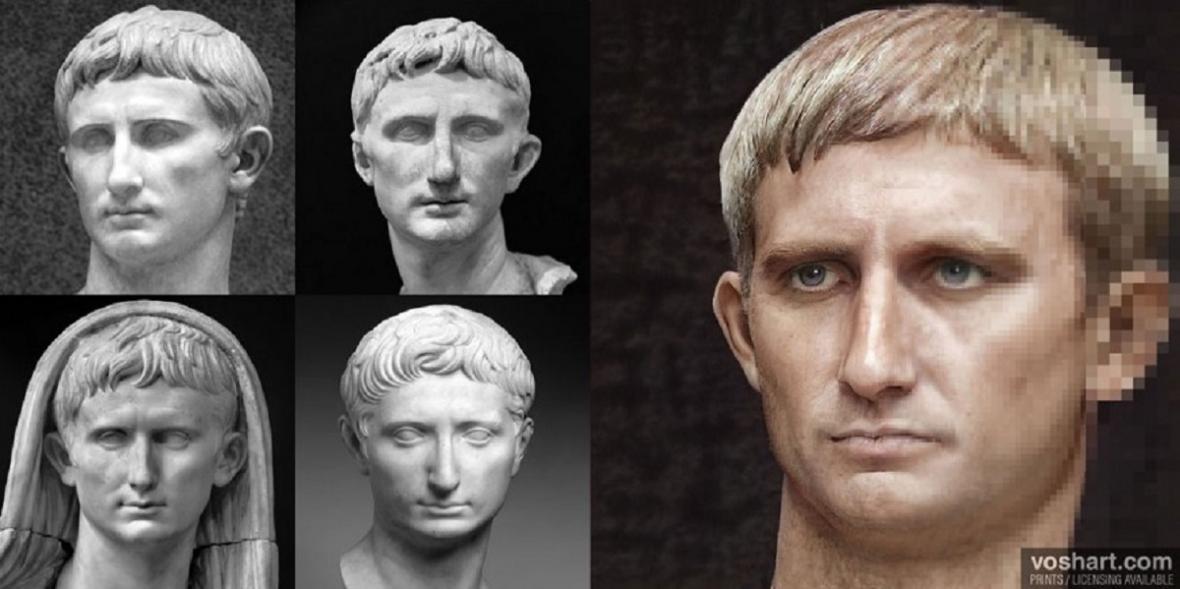
Augustus
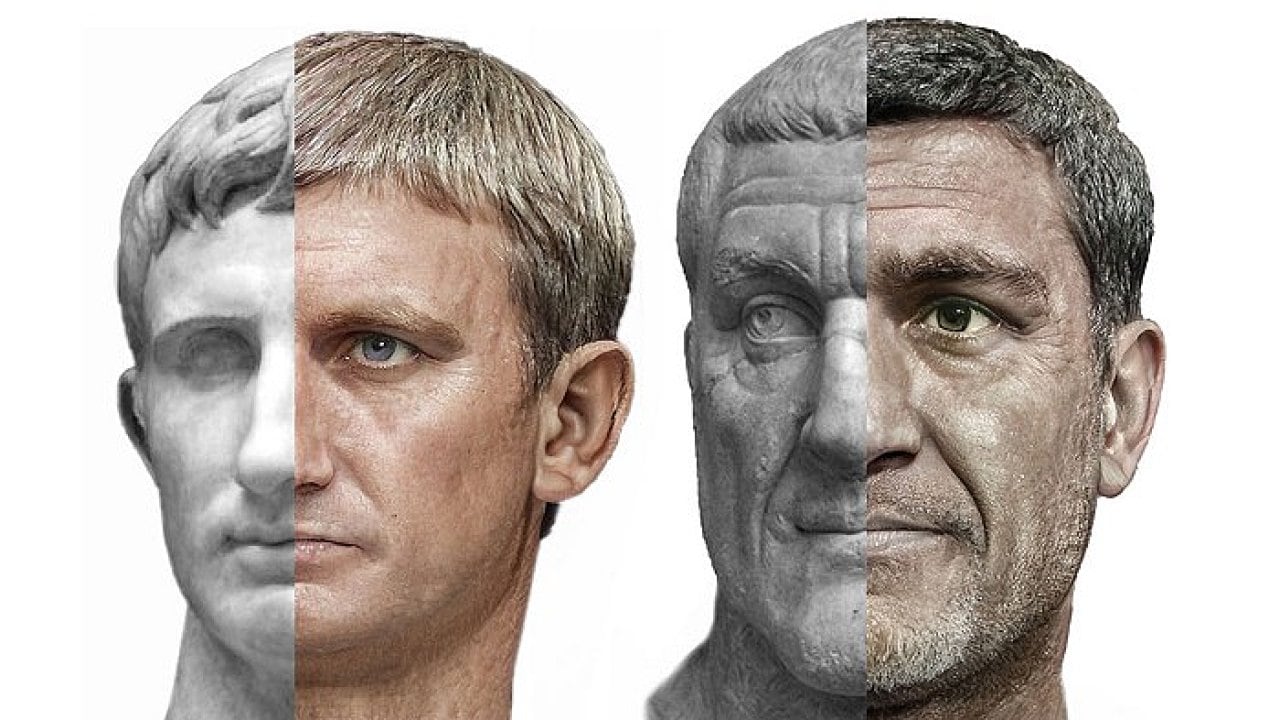
Augustus and Maxinimus Thrax
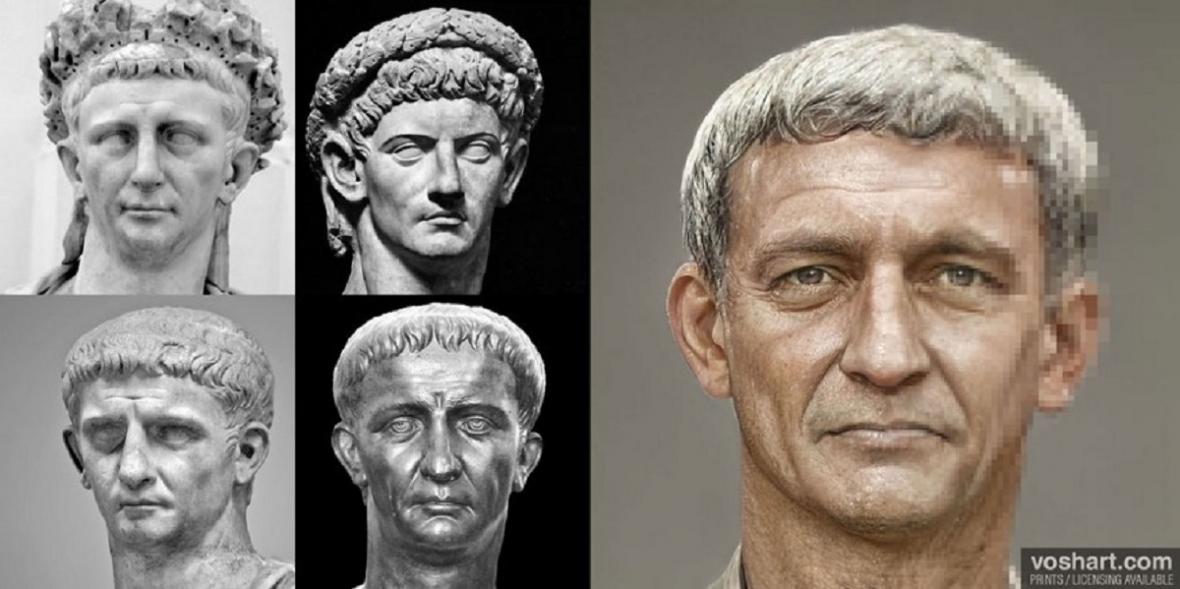
Claudius
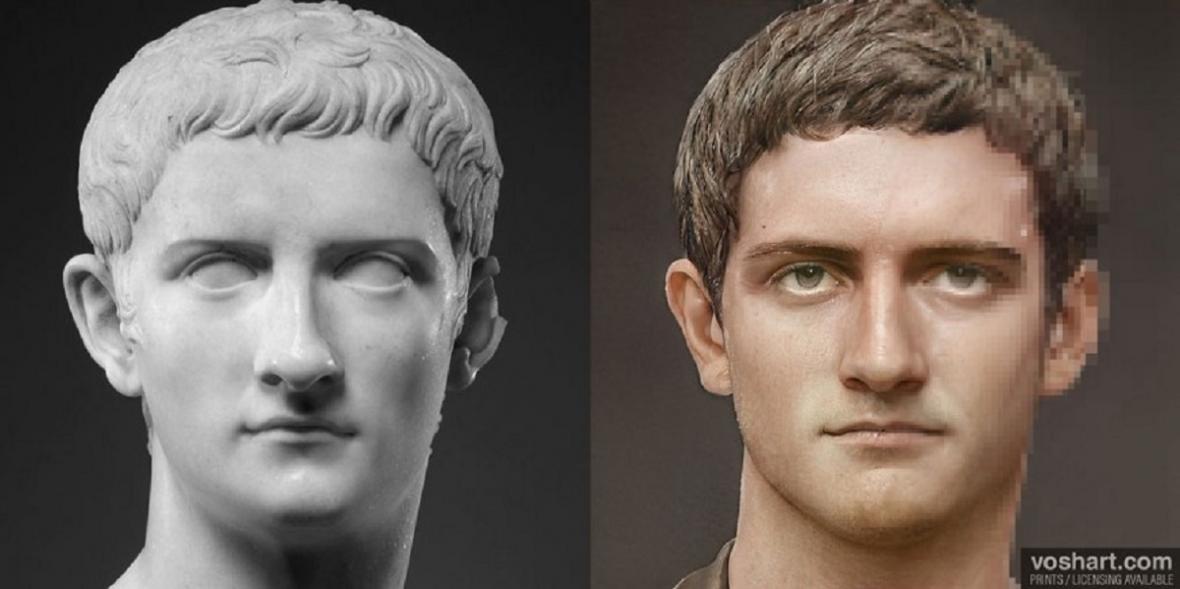
Caligula

Nero

Portrait of the family of Septimius Severus on the so-called Severan Tondo.jpg
Sources: kottke.org, theverge.com, voshart.com, medium.com, etsy.com
The article is included in categories:
- Archive of articles > Personalities
- Archive of articles > Archaeology > Finds and rescue research abroad
Post
Claudius překvapil díky knihám jsem čekal obraz poloblba. Diky moc za zajímavej článek.
To je fakt dobrý! Paráda článek. Ten Nero fakt vypadá jako blázen! 
Pékný 
Áno, je fantastické čo dnes technika a umelci dokážu...
Odkaz na stránku mi niekto postol (pred pár týždňami) v mojej skupine na FB....a odvtedy ho mám medzi záložkami v PC 
https://medium.com/@voshart/photoreal-roman-emperor-project-236be7f06c8f
Kim: nemýliš si Claudia s Caligulom ?
Parádní co dnes člověk zvládne vytvořit
Super článek 👍
kelt122: ne myslím přesně Tiberia Claudia Caesara Augusta Germanica
Nemůžu si pomoc, Claudius mi připomíná Babiše 
















